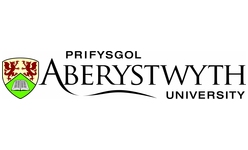 Aberystwyth
Aberystwyth

The Computer Science Department at Aberystwyth was founded in 1970; it is a successful department, both in teaching and research, and provides a lively working environment. It has about 450 full time equivalent students, including 30 research students, and some 50 teaching, research and support staff; it continues to grow steadily. There are strong links with industry and academia both in the UK and continental Europe, and with the USA.
The department’s commitment to research is reflected in low teaching loads, averaging between six and seven contact hours per week, including project supervision. The overheads from the department’s substantial research grant income allow it to provide excellent support, both administrative and financial, to its academic staff.
In the 2008 RAE the department’s profile was 4*: 25%, 3*: 45%, 2*: 30%, which places it at the top in Wales and within the top 20 in the UK.
VISION, GRAPHICS and VISUALISATION GROUP
The focus of the group is on: (medical) image analysis and understanding; extraction of the structure of complex objects; appearance-based methods to provide mobile robots with various capabilities including topological mapping and pose stabilisation; analysis of multi-spectral satellite data for environmental purposes.
Texture analysis and synthesis is used in image manipulation and medical image understanding and developments in the topological aspects of the domain are supported by EPSRC funding. Registration has concentrated on computational geometry and other mathematical properties of images and volumes, recognition of articulated motion for evaluating human walking patterns, and medical shape analysis.
From a vision research point of view, current work is concentrating on:
- Topological data analysis of high dimensional image spaces and medical data.
- Panoramic image analysis for efficient and “work everywhere” robotic vision.
- Free form and 3D shape matching to model complex 3D objects and develop compact representations of these shapes.
- Understanding of texture analysis and synthesis methods for image manipulation and medical image analysis.
The group has strong links with the Department’s Intelligent Robotics group, which is one of the largest and best-known robotics groups in the UK, carrying out research that falls under the umbrella of “unconstrained environments”, in the context of both software and hardware. Biologically inspired models of control and cognition provide a common theme to much of the group’s work. Robot vision systems work has also followed this theme along with more traditional vision techniques. Work in space robotics has been prominent with involvement in Beagle2 and several future Mars missions.
You can visit the home web site here.